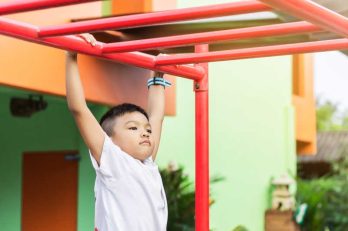Numerous recent research indicates that many kids are not getting enough daily movement or engaging in regular physical activity. Children are spending more time staring at screens and less time moving their bodies as technology advances and spreads. This is especially concerning in light of the rise in childhood obesity, diabetes, and other illnesses.
There are numerous advantages of exercise for kids. It also supports their mental growth and health, boosting motivation, focus, and learning. It not only helps kids build strong muscles and bones, maintain a healthy weight, and lower their risk of developing conditions like type 2 diabetes. The skills and self-assurance required to maintain an active and healthy lifestyle will be given to your child if you encourage them to be active and enjoy physical activity.
Here are just a few ideas for motivating your kids to be active from an early age:
Offer Interactive Toys
Toys that are entertaining and energetic are a great way to keep young children moving. Although there are many alternatives, this might be something as straightforward as a ball. This will not only get them moving and having fun, but it will also help children develop important skills including motor skills and hand-eye coordination.
Set an Example
Children are more likely to participate in sports and physical activity themselves when they routinely observe their parents doing so, according to research. Your kids will take notice of how you handle your body and want to emulate you if you do. Staying active yourself will give your kids a healthy role model and affect what they perceive as normal and normal.
Play with Your Child and Go for a Family Workout
Play with your child and go for a family workout to encourage them to be active. Take them on a bike ride or a stroll around the park to make exercise enjoyable. Make it more entertaining by including a game or challenge. Imagination is the only limit to the possibilities. Make playing games and exercising a regular part of your week, and they’ll pick it up quickly.
Disconnect the Screens
Limit your usage of the phone, computer, and TV. The usual suggestion is to limit your daily screen time—which includes TV, videos, computers, smartphones, and video games—to no more than 1 to 2 hours. Although there are good and terrible things about screens, they shouldn’t be used constantly. The additional physical activity can then be done during free time.
Permitting Them to Engage in Various Sports and Activities
Finding a sport or activity that your children genuinely enjoy and are passionate about is one of the best ways to encourage them to love exercise and form a lifelong habit of it. Enroll them in various coaching initiatives or age-appropriate groups. Where you can, try to introduce children to a variety of games and activities, allowing them the chance to try out new physical pursuits and see what sticks.
If you’re looking for a setting where your kids can be active while having fun, picking up new skills, and making friends, get in touch with Kid’s 1st Pediatrics for numerous suggestions on where to begin and more details on kids’ health.

